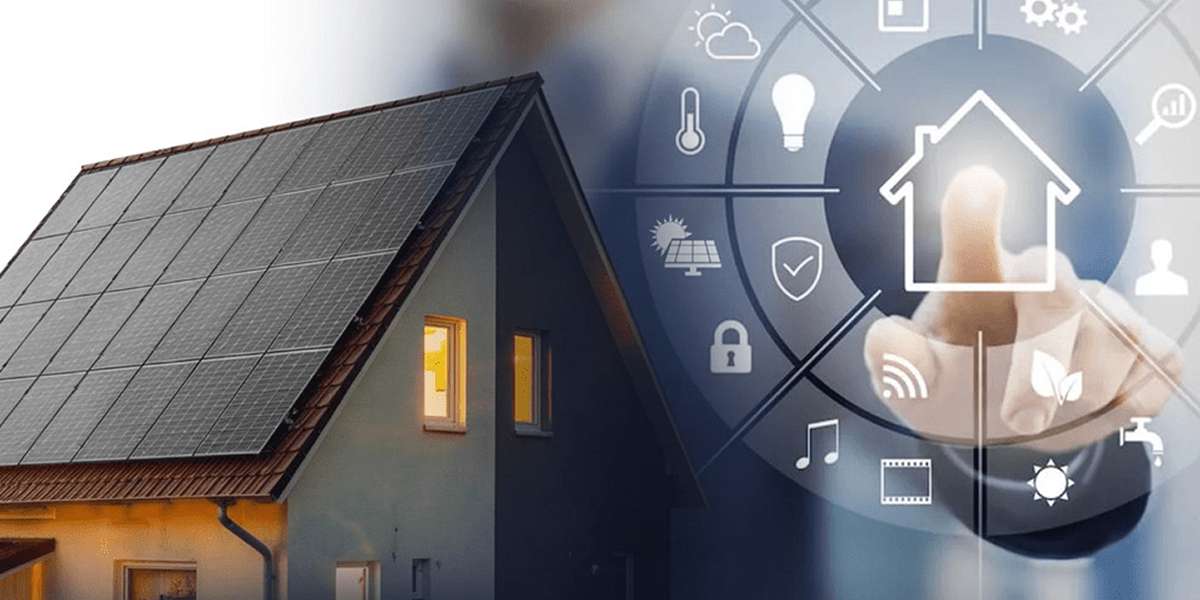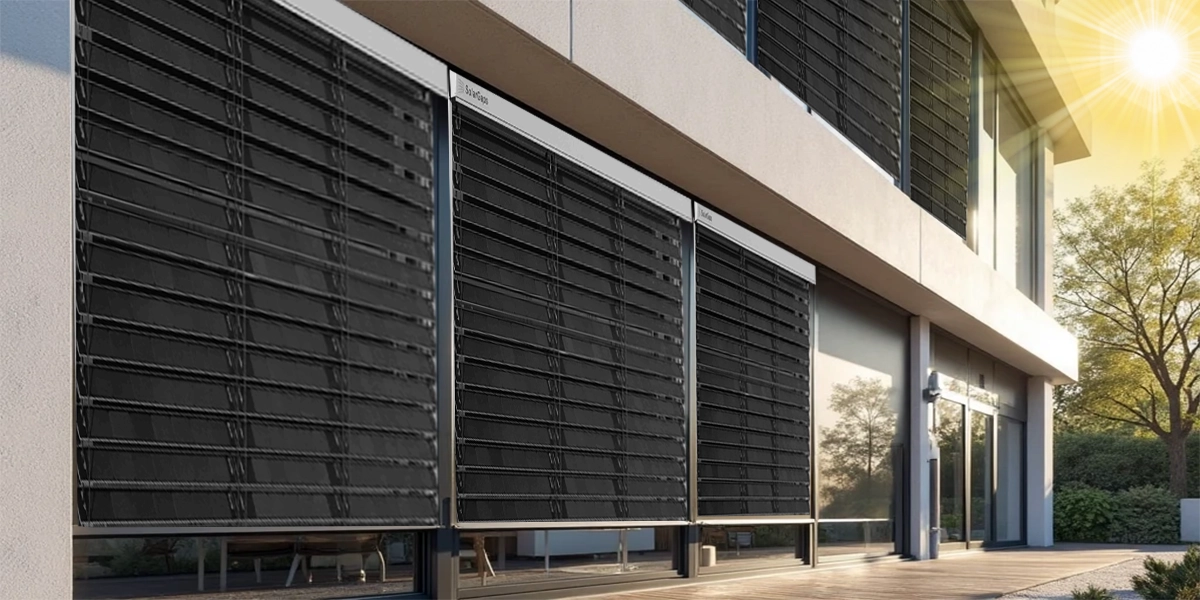- Updated On: July 30, 2025
Solar Advancements: Heartbeat Technology for Maximizing Solar Output
With rising energy costs and uncertainty about the weather, people are eager to generate clean, free electricity by installing energy-smart systems like solar panels, batteries, electric vehicle charging points, and heat pumps, which can cut their electricity bills and make them power independent. However, it is challenging to manage the energy consumption in a way to gain maximum savings, like when to store energy, when to use it, and how to maximize solar generation. Heartbeat technology is a game-changing solar energy management innovation that gets your solar system to “think” and “act” in real-time, like the beat of a heart, and adjust your home’s energy needs every second. The system includes AI and smart sensors that detect your power usage, weather, grid signals etc. This leads to efficient energy management by reducing power loss. This maximizes your savings and makes your home energy efficient.
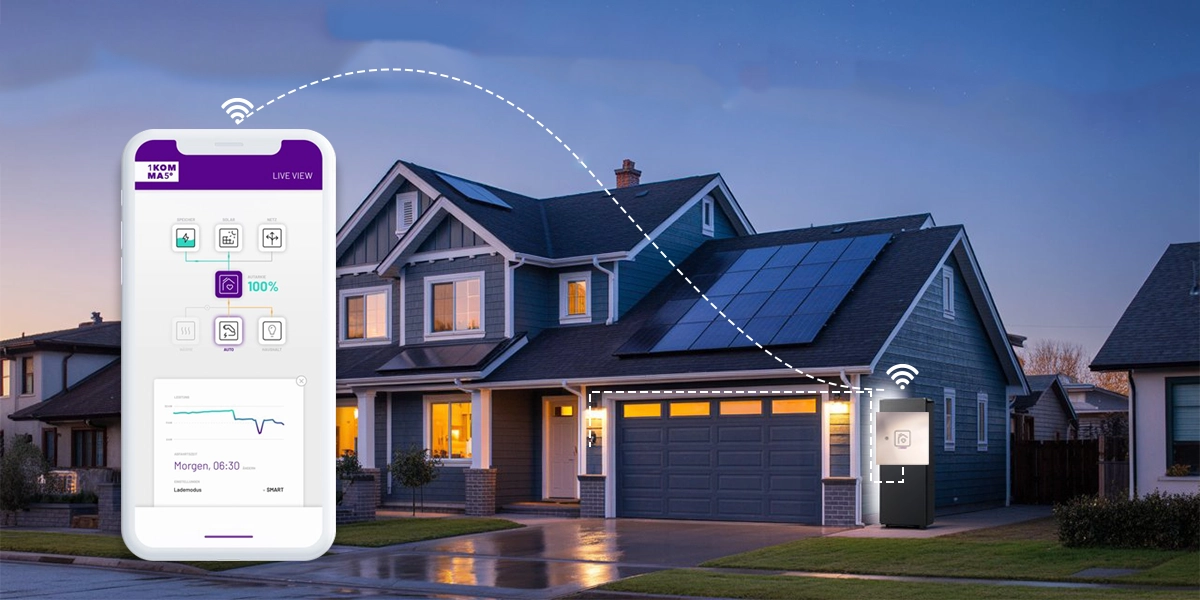
In this article, we are going to talk about how heartbeat technology is revolutionizing the way you optimize power consumption and how it is different from a home energy management system.
What is Heartbeat Technology?
Heartbeat is a small IoT-based device that links your home power systems. With a simple mobile application, it allows you to track and manage your power usage. Also, the app provides you with information regarding your home batter backup EV charger and other smart devices. Heartbeat technology detects how much power a house is using and uses that data in conjunction with external information, such as the price of electricity from providers and weather patterns. Heartbeat uses AI to analyze that data and decide when and how to store and discharge solar power.
For instance, when power is cheap, Heartbeat will switch on your battery to store it. Heartbeat will charge the house battery system in advance if there are clouds in the sky and electricity prices are high. This will reduce the possibility of those overcharges. In addition, heartbeat technology also monitors the efficiency of solar panels so that it can alert you to any fault. In some cases, it will even do the repair automatically (for example, by cutting the output of a panel back); in others, it will alert you to a fault so that you can contact your solar installer promptly to fix it.
How does Heartbeat Technology work in solar energy systems?
The tracking of the heartbeat begins with the installation of electronic sensors over the solar energy system. The sensors track information on major parameters such as temperature, humidity, voltage, current, and irradiance. This set of real-time data is the heart of the technology. The data is then transmitted to a central control system, where advanced analytics and machine learning algorithms run on the information. This process identifies patterns, anomalies, and trends to identify the inefficiencies or power loss issues. It also gives you an alert if there is a chance of the system malfunctioning so that you can plan the maintenance before it’s late.
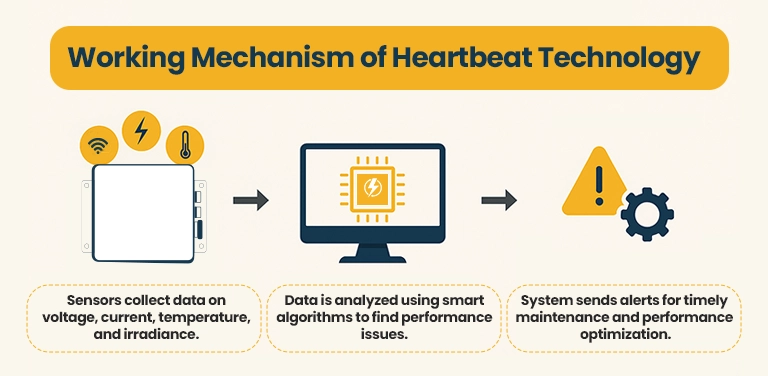
What are the advantages of using Heartbeat Technology?
Technology like the heartbeat systems provides several benefits:
Less Energy Waste and Lower Electric Bills:
By tracking and managing loads, the heartbeat system helps to reduce energy loss. It also detects TOU rates and charges the battery storage during off peak hours to save you more.
Easier Energy Management:
Heartbeat technology makes it convenient to manage all your home devices through a single application. You can easily integrate all your smart home devices including solar batteries, EV chargers etc. and optimize your power use by efficient load management.
Fault Detection:
Heartbeat monitors performance to keep all energy systems at their peak levels. It also identifies faults before they happen, hence minimizing the time and money spent on fixing any issues.
What is the difference between 'Heartbeat Technology' and a Home Energy Management System (HEMS)?
Heartbeat links devices, like a HEMS, so you can control and view energy use at the same time. Both advanced technologies detect your power usage behaviors and suggest you with the tips to efficiently manage and save more with your solar energy system. However, the major distinction is that HEMS technology generally only identifies devices made by the same manufacturer. The majority of homes employ devices of multiple brands, and each device needs to be managed individually. The disadvantage is not being able to automate and understand how the systems interact with one another. Heartbeat allows you to consolidate data collection and control for all your smart energy devices, regardless of any brand, to operate in perfect harmony. It lets your priorities charge according to your need and optimizes comfort and efficiency.
How does Heartbeat Technology help with EV charging?
Heartbeat monitoring can help electric car (EV) charging more efficient in several ways:
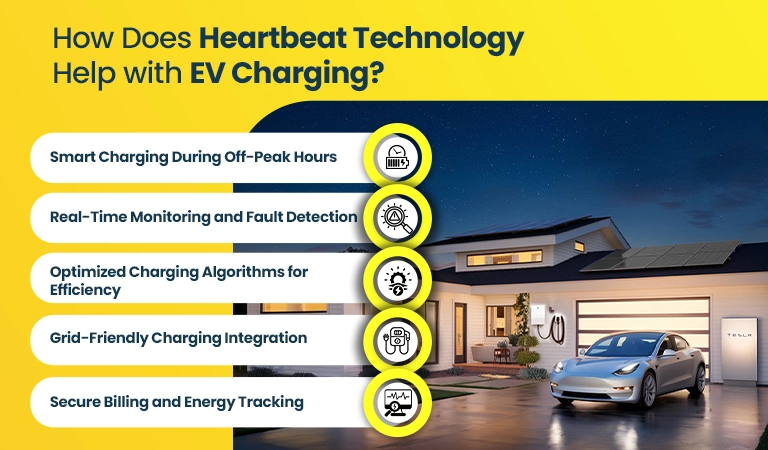
- This smart technology charges your EV during the off-peak electricity hours. This allows you to optimize your power usage and pocket more savings.
- The real-time monitoring feature provides useful information to the EV owners about the best charging hours. It also informs if there is any potential fault detectedduring EV charging. This information can be easily accessible to you on the app.
- Heartbeat devicescan maximize charging algorithms to gain maximum energy efficiency. It can consider factors such as the state of the battery, grid conditions, and availability of renewable sources of power to charge EVs during off-peak hours.
- Heartbeat technology-based smart charging solutions can be optimized for grid integration. That is, EVs can charge off-peak when the demand is low, decoupling the load from peaking times.
- Heartbeat technology is used to secure the billing and authentication processes. It is also used for monitoring the energy consumption of customers and to enable various payment systems so that recharging a car becomes easy for owners.
Overall, Heartbeat technology is a reliable monitoring and control system designed to optimize solar performance by making possible real-time monitoring, proactive maintenance, and automatic access. With data analytics and real-time information, it plays a pivotal role in energy production optimization, cost savings, and solar system performance overall.
Solar SME, a local solar installer, can help you to choose the best monitoring system for your home. You can book a FREE Appointment with our solar experts!
Related Articles:
Smart home technology is revolutionizing the way of living by allowing homeowners to manage their power usage and making their home efficient.
Microgrids are revolutionizing the current energy system because they provide an efficient, safe, reliable, and sustainable energy supply.
Solar blinds are becoming a home technology game-changer. Window blinds not only control sunlight but also collect sunlight, converting natural light into clean energy from your windows. Explore how they work and what to consider before choosing them.

